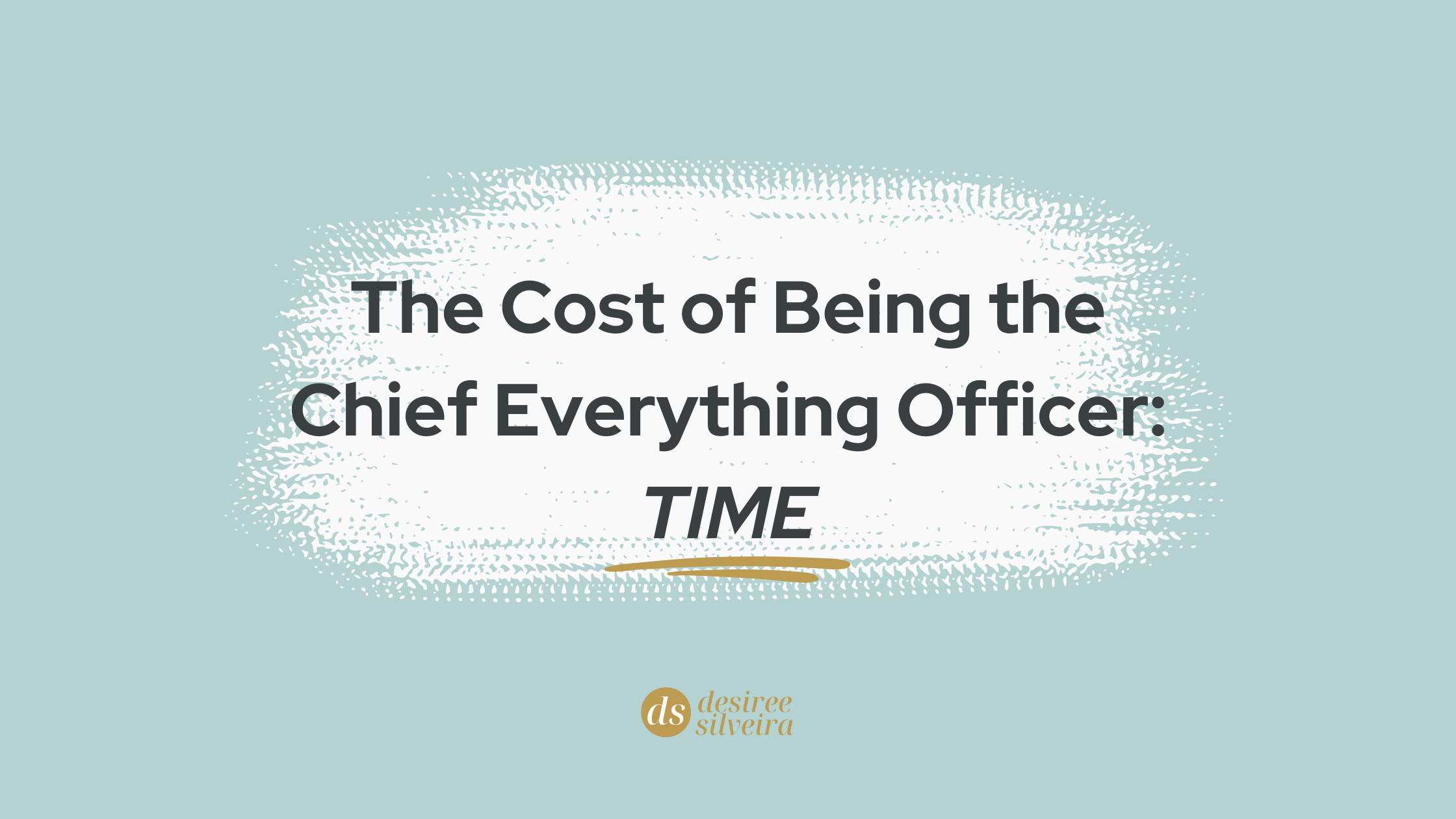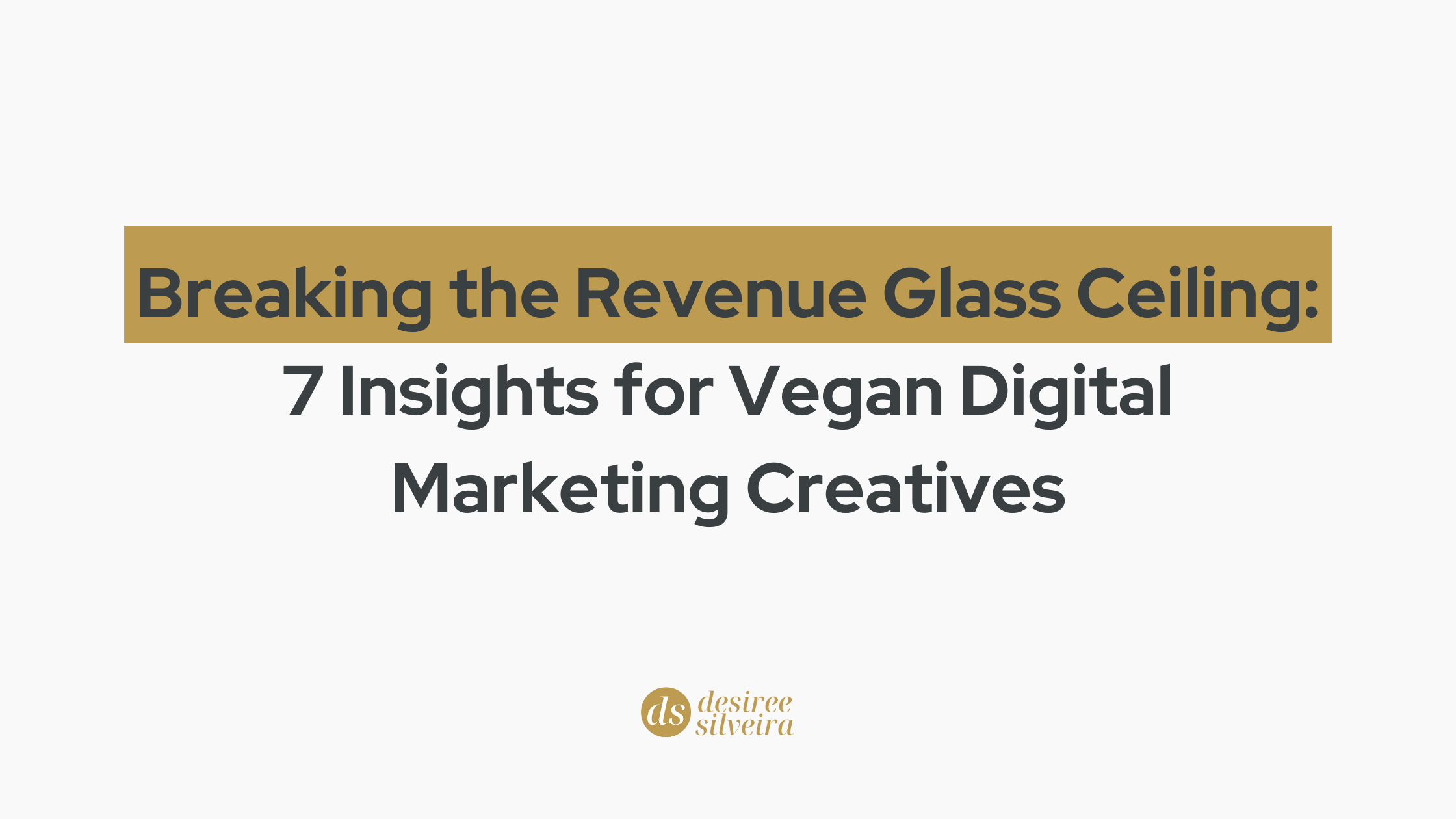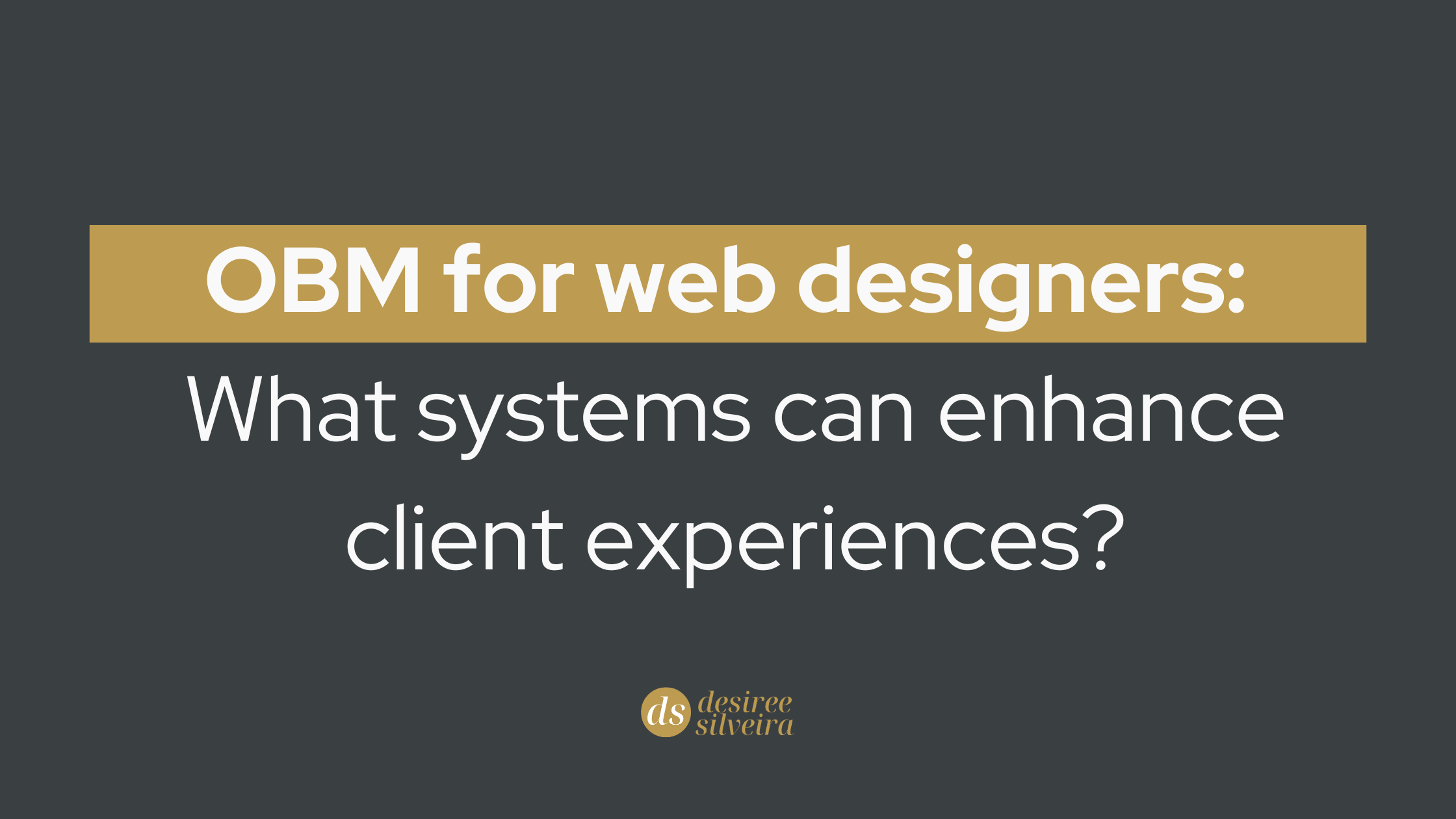I’ve been a web designer, and I can tell you firsthand that running a web design business involves long hours of work. However, blessed with my systems brain, I managed to create a system that helped me streamline a number of my tasks. Without systems and processes in place, it can be a stressful experience for both the web designer and the client.
As an OBM for web designers (and other digital marketing creatives), I want to highlight the various challenges that are faced when systems are not a priority, and how even setting up a lean infrastructure can go a long way to reduce stress for the web designer and enhance the client’s experience.
Challenges in providing an unforgettable experience to web design clients
Web design agencies often face numerous challenges when it comes to providing an unforgettable experience to their clients. One of the main obstacles is the lack of organization and streamlined processes. Without efficient systems in place, it becomes difficult for web design creatives to deliver consistent and high-quality work. The biggest complaints about web designers in fact, is poor planning and inability to meet deadlines.
This is where an Online Business Manager (OBM) can step in to save the day (and the client!).
If you’ve been looking for someone who can think big picture and yet have eyes on the details, your best bet is looking for an OBM for web design creatives.
Someone who helps in creating and implementing systems that enhance client experiences. They can also act as a bridge between the client and the agency, ensuring clear communication channels and streamlined project management.
With an OBM’s expertise, web design agencies can establish systems such as a client onboarding process, which ensures that clients’ goals and expectations are aligned from the beginning.
Additionally, having a clear and effective communication channel is sometimes all that it takes to provide exceptional experiences to clients.
A system that allows for regular progress updates and client feedback goes a long way to make the client feel confident that the project is on track, and most importantly, they feel heard.
Putting a robust data collection process in place, and taking notes from the client’s feedback brings the web design and development closer to the client’s expectations, with lesser effort.
Web design creatives may have identified the tools, but how well are they being utilized?
By implementing systems like project management tools, efficient design and development workflows, and streamlined website launch processes, web design agencies can provide a seamless and enjoyable experience to their clients.
Furthermore, post-launch support and maintenance plans ensure that clients receive ongoing assistance and updates, which can further enhance their experience and satisfaction.
There’s a lot, as you know, that goes into creating that exceptional experience, and to achieve it, you can’t do it by yourself (let’s be honest, you would have done it already if you could). So let’s take a deep dive into what it can mean for your creative web design firm, if you decide to hire an OBM to take over your operations and professionalize your systems.
The role of OBM (Online Business Manager) in enhancing client experiences
As you can tell by now, an Online Business Manager (OBM) can be the solution to enhancing client experiences for web design agencies, because let’s face it, creatives will keep systems on the back burner. Therefore, to avoid putting off the inevitable any longer, hiring an OBM can be the missing link between the client and the design team, ensuring that all communication channels are clear and expectations are met.
OBM also oversees the implementation of various systems and processes that streamline the web design workflow, making sure that projects are delivered efficiently and on time. With their expertise in managing online businesses, an OBM can help web design creatives systemize their delivery and provide clients with an unforgettable experience.
System 1: Client onboarding process
The client onboarding process is the first step towards providing a seamless and unforgettable experience to web design clients. This system involves understanding the client’s needs, goals, and expectations from the project. It also includes gathering relevant information and documents, such as branding assets, content, and target audience details.
By implementing a well-defined client onboarding process, web design agencies can establish clear expectations and set the tone for a successful collaboration from the start. This system ensures that the agency and the client are on the same page, leading to a smoother and more efficient design and development process.
Asana is a great tool that I’ve used to onboard new clients and introduce them to the various tasks and deadlines involved in the project. It allows me to create a detailed project plan, assign tasks to team members, and track progress. With Asana, I can easily share updates with clients, request their input and feedback, and keep everyone informed about the project’s status.
System 2: Clear communication channels
Too much communication is never a bad thing, but too little can be detrimental. Utilizing clear communication channels can prevent misunderstandings and delays.
Web design agencies can employ various tools such as project management platforms, email, and video conferencing software to facilitate seamless communication with clients. These channels allow for easy sharing of information, updates, and feedback, ensuring that the client’s vision is accurately translated into the final product.
By implementing clear communication channels, web design agencies can enhance client satisfaction and create a smoother workflow.
Apart from using Asana for communication, I would also rely on screencasting tools like Loom that helped me reduce meeting time, yet clearly explain and demonstrate design concepts to clients. This not only saves time but also ensures that the client fully understands the design choices being made. With screencasting, designers can record your screen and narrate your thought process, giving clients a behind-the-scenes look at the design process. This level of transparency and communication builds trust and strengthens the client-designer relationship.
System 3: Project management tools
To ensure a smooth and organized workflow, web design agencies must invest in reliable project management tools. These tools help streamline communication, track tasks and deadlines, and ensure everyone involved in the project is on the same page. From popular tools like Trello and Asana to more advanced options like Basecamp and JIRA, there are various project management tools available to meet the unique needs of web design creatives. Implementing such a system allows for efficient collaboration, timely deliveries, and ultimately, a more satisfying client experience.
I’ve mentioned before, that Asana is my favorite tool for project management. It helps me organize and prioritize tasks, assign them to team members, set deadlines, and track progress. With Asana, I can easily create different project boards for each client and add tasks with specific details and attachments. This ensures that nothing falls through the cracks and that all project requirements are met.
I’ve helped multiple clients project manage their brand launches, website launch, and campaign launches, so putting a plan in place is almost second nature. If you are looking for support with project management, let’s get a call in the calendar, and talk about your upcoming web design projects.
System 4: Efficient design and development workflow
An efficient design and development workflow is essential for web designers who want to systemize their delivery process and provide an outstanding client experience. This process ensures that projects are completed in a timely manner, without compromising on quality. It involves setting clear deadlines and milestones, assigning tasks to the appropriate team members, and utilizing project management tools to keep track of progress.
By streamlining the design and development workflow, web designers can deliver projects more efficiently and effectively, leaving their clients impressed with the seamless process.
As a designer, I used tools like InVision and Miro to collaborate with my team members and clients during the design and development process. InVision allowed us to create interactive prototypes, gather feedback, and iterate on designs seamlessly. This not only saved us time but also ensured that our clients were involved in the decision-making process and felt confident in the final product.
Additionally, Miro was a valuable tool for visual collaboration. We used it to create mood boards, wireframes, and user flows, which helped us align our vision with the client’s expectations. It allowed us to work together in real time, making the communication process smoother and more efficient.
System 5: Streamlined website launch process
A smooth website launch involves thoroughly testing the website on different devices and browsers, ensuring that all the links and forms are functioning correctly, and optimizing the website for fast loading speeds.
By having a streamlined website launch process in place, web design agencies can confidently deliver a fully functional website to their clients, minimizing any last-minute glitches or issues that may arise. This system not only ensures client satisfaction but also reflects the professionalism and attention to detail of the web design agency.
As part of my launch strategy, I also include a checklist of places the client can share the new website URL , such as their social media profiles, email signature, and business cards. This helps the client actively promote their new website and increases its visibility to their target audience.
Additionally, a streamlined website launch process involves setting up proper tracking and analytics tools to monitor website performance and visitor behavior. This allows web design agencies to gather data and insights that can be used to further optimize the website and improve the overall user experience. By staying informed about website traffic, conversion rates, and other key metrics, web design agencies can proactively identify any areas that may need improvement and make necessary adjustments.
System 6: Post-launch support and maintenance plans
Once a website is launched, the work doesn’t end there. Post-launch support and maintenance plans are the next steps to ensure the website remains functional and up-to-date. This process includes offering ongoing technical support, regular updates, and monitoring for any issues that may arise.
It’s essential to have a dedicated team in place to handle any necessary maintenance tasks promptly. By providing clients with post-launch support and maintenance plans, web design agencies can ensure their clients’ websites continue to deliver a seamless user experience and remain secure and optimized for the long term.
I recommend offering different maintenance plans based on specific needs and budget of each client. This can range from basic updates and backups to more comprehensive services like content management, security monitoring, and performance optimization.
By tailoring the maintenance plans to the client’s requirements, web design agencies can provide ongoing value and support to their clients, building long-term relationships and ensuring client satisfaction.
Finally, it is important to note that the systems and processes we discussed here are at a broad level. In order to ensure consistency, smooth onboarding of new team members, and setting standards in processes, it is crucial to develop Standard Operating Procedures (SOPs) at a detailed level.
If you are interested in taking your web design business to the next level and want to bring in someone with industry experience in managing client projects and remote teams, I invite you to get on a call with us. Let’s discuss how we can work together to bring efficient systems to your growing web design agency. The OBM for web designers can truly transform your client experiences and help your business thrive in this competitive industry.






